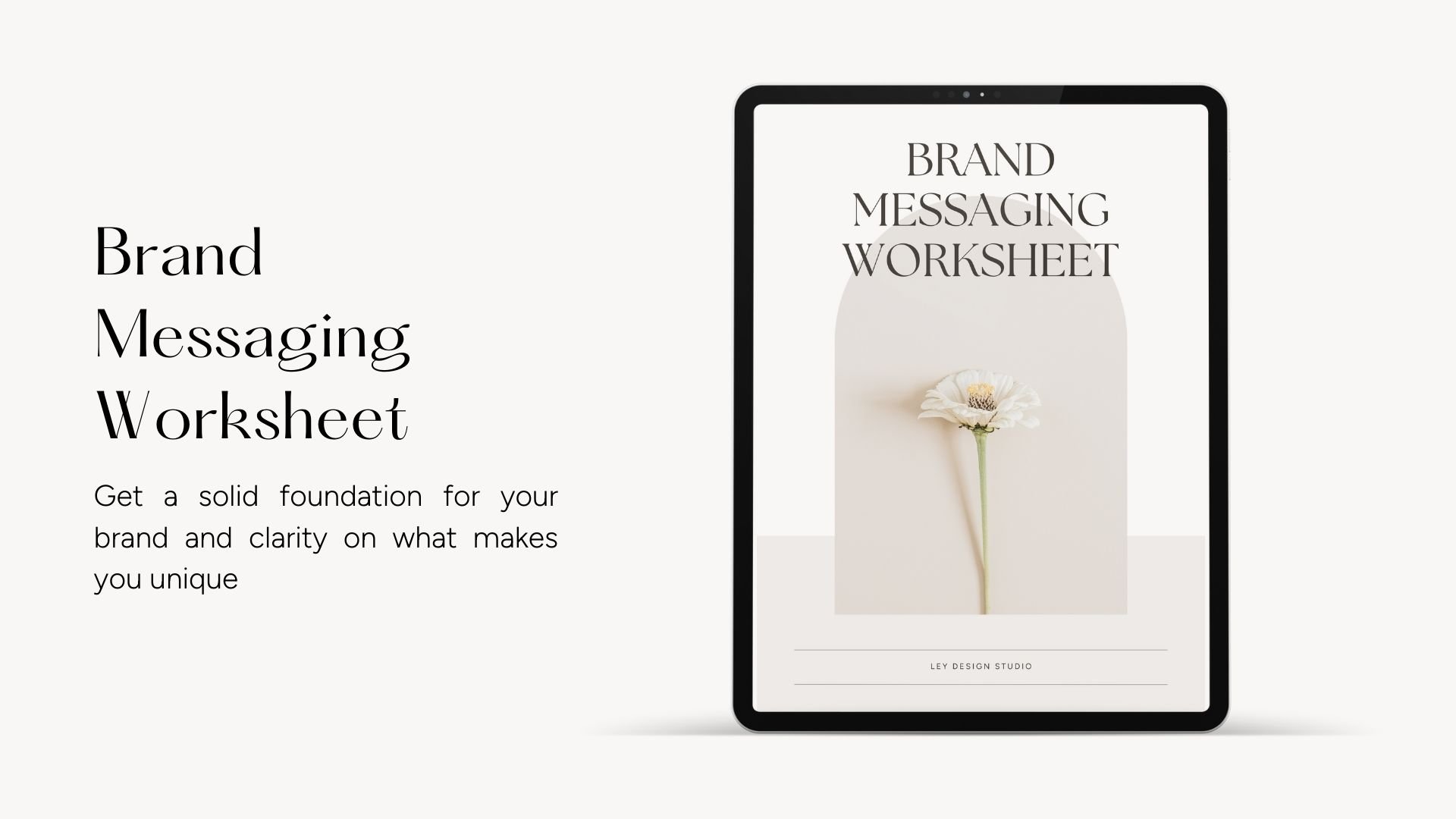What Is Brand Onlyness Statement And Why It Matters
Heads up: this post may contain affiliate links. In other words, if you make a purchase using my link, you won’t pay a dime more but I’ll earn a small commission. My chips and salsa fund thanks you from the bottom of its heart… er stomach?
Your brand is so much more than your logo and your colors — it's how you differentiate yourself from your competition. And one of the best ways to communicate that difference is through your brand onlyness statement.
It's a concept developed by brand strategist Marty Neumeier. He talks about it in his book Zag and it's part of a 17-step process that he suggests every company should go through in order to develop their brand. And in this post, I’ll walk you through what it is and give you a few examples on how to write it for yourself.
What is the brand onlyness statement?
Simply put, a brand onlyness statement is a concise statement that explains what you uniquely stand for and offer. Think of it as a more extended, more precisely defined version of your brand's mission statement.
It's not meant to be used publicly but rather serves as your internal compass that helps you gain a deeper understanding of your brand and what makes you different in your specific niche.
Your brand onlyness statement answers the What, How, Who, Where, Why, and When questions. The main purpose behind it is that if you do this correctly, you should be able to position yourself as the only brand in your space that provides a specific product or service in your unique way.
How to write your brand onlyness statement?
So let's walk through these 6 elements and take a look at a couple of specific examples so you can see it in action and then come up with your own version.
What answers what you do
How explains your differentiating factor or what makes you unique
Who represents your target audience
Where represents geographical location
Why explains your audience's ultimate goal or desire
When represents current time period or underlying trend in your industry.
So when we put all of this together using a specific example of a food blogger, we end up with something like:
What: The ONLY food blogger
How: that writes specifically about creating quick and healthy meals on a budget
Who: for busy moms
Where: in southern USA
Why: who want to save time and money on meal prep without sacrificing the quality of their meals
When: in an era of abundant food choices and rising prices
Combine all of that together and you get a statement that looks like this:
Allie Jones is the only food blogger that writes specifically about creating quick and healthy meals on a budget for busy moms in the southern USA who want to save time and money on meal prep without sacrificing the quality of their meals in an era of abundant food choices and rising prices.
Here’s another example written for a travel consultant:
What: The ONLY travel consultant
How: that specializes in finding "hidden gem" travel destinations
Who: for newlyweds
Where: on the west coast
Why: who want to enjoy their honeymoon in a beautiful but tranquil location
When: in an era of cliche honeymoon destinations
Put all of the elements together and it would look like this:
Emily Stone is the only honeymoon travel consultant that specializes in finding "hidden gem" travel destinations for newlyweds on the west coast USA who want to enjoy their honeymoon in a beautiful but tranquil location in an era of cliche honeymoon destinations.
Test out your onlyness statement
Once you've created the initial version of your onlyness statement, put it to the test. Try replacing your brand name with that of your competitor. If the statement is still valid, that's a sign you still have more work to do.
You might need to change one or multiple parts of your onlyness statement to ensure that YOUR BRAND is the ONLY one that fits into that statement.
Where and how to use your brand onlyness statement?
As I mentioned, your onlyness statement is not meant to be used in your marketing materials. At least not in its full form, given that it’s quite wordy. It's not likely that your ideal audience will ever remember it.
But, you can use parts of it to create your tagline or to pull your differentiating factor. You can then emphasize them in your marketing.
Another way to make use of your onlyness statement is as a starting point for your ideal client avatar. Of course, you’d need to flesh it out further but you have a solid starting point right there.
Lastly, you can use your onlyness statement to start defining your brand values, your brand voice, and your brand personality.
Final Thoughts
If you’re working on your brand or if you’re going through a rebranding process, it’s a good idea to create your brand onlyness statement.
As Marty Neumeier puts it: “Onlyness” is by far the most powerful test of a strategic position. Brands need strong positioning because customers have choices—if you don’t stand out, you lose.
Need a little help coming up with your brand onlyness statement? Download my brand worksheet below and use it to create your brand onlyness statement as well as your brand mission statement and define your brand vision and purpose.
For more tips and tricks, check out these articles:







